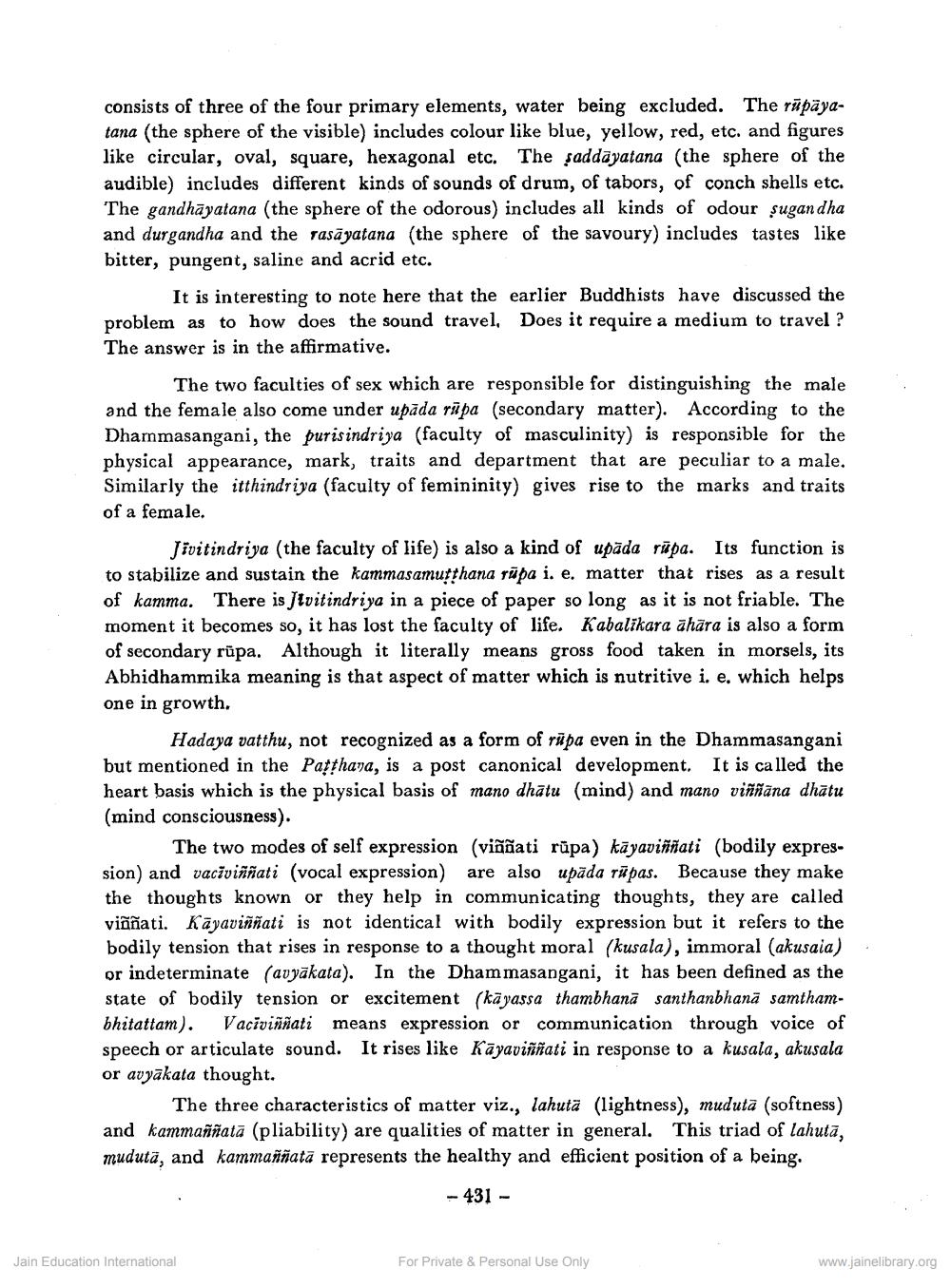Book Title: Concept of Matter in Lee Buddhism Author(s): Angraj Chaudhary Publisher: Z_Kailashchandra_Shastri_Abhinandan_Granth_012048.pdf View full book textPage 6
________________ consists of three of the four primary elements, water being excluded. The rāpāyatana (the sphere of the visible) includes colour like blue, yellow, red, etc. and figures like circular, oval, square, hexagonal etc. The saddayatana (the sphere of the audible) includes different kinds of sounds of drum, of tabors, of conch shells etc. The gandhāyalana (the sphere of the odorous) includes all kinds of odour sugandha and durgandha and the rasayatana (the sphere of the savoury) includes tastes like bitter, pungent, saline and acrid etc. It is interesting to note here that the earlier Buddhists have discussed the problem as to how does the sound travel, Does it require a medium to travel? The answer is in the affirmative. The two faculties of sex which are responsible for distinguishing the male. and the female also come under upada rupa (secondary matter). According to the Dhammasangani, the purisindriya (faculty of masculinity) is responsible for the physical appearance, mark, traits and department that are peculiar to a male. Similarly the itthindriya (faculty of femininity) gives rise to the marks and traits of a female. Jivitindriya (the faculty of life) is also a kind of upada rapa. Its function is to stabilize and sustain the kammasamuṭṭhana rupa i. e. matter that rises as a result of kamma. There is Jtvitindriya in a piece of paper so long as it is not friable. The moment it becomes so, it has lost the faculty of life. Kabalikara āhāra is also a form of secondary rupa. Although it literally means gross food taken in morsels, its Abhidhammika meaning is that aspect of matter which is nutritive i. e. which helps one in growth. Hadaya vatthu, not recognized as a form of ripa even in the Dhammasangani but mentioned in the Patthava, is a post canonical development. It is called the heart basis which is the physical basis of mano dhatu (mind) and mano viññāna dhātu (mind consciousness). The two modes of self expression (viññati räpa) kayaviññati (bodily expres sion) and vaciviññati (vocal expression) are also upada rūpas. Because they make the thoughts known or they help in communicating thoughts, they are called viññati. Kayavinnati is not identical with bodily expression but it refers to the bodily tension that rises in response to a thought moral (kusala), immoral (akusaia) or indeterminate (anyakata). In the Dhammasangani, it has been defined as the state of bodily tension or excitement (kayassa thambhana santhanbhanā samthambhitattam). Vaciviññati means expression or communication through voice of speech or articulate sound. It rises like Kayaviati in response to a kusala, akusala or avyakata thought. The three characteristics of matter viz., lahutä (lightness), muduta (softness) and kemmaññata (pliability) are qualities of matter in general. This triad of lahuta, muduta, and kammaññata represents the healthy and efficient position of a being. -431 Jain Education International For Private & Personal Use Only www.jainelibrary.orgPage Navigation
1 ... 4 5 6 7 8
